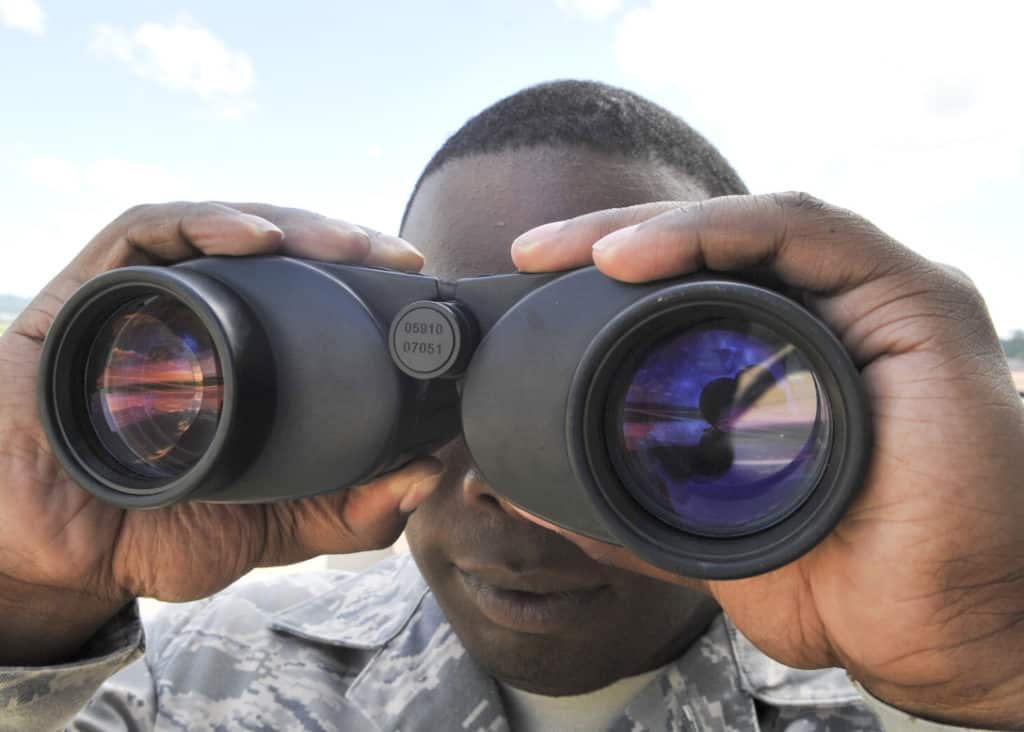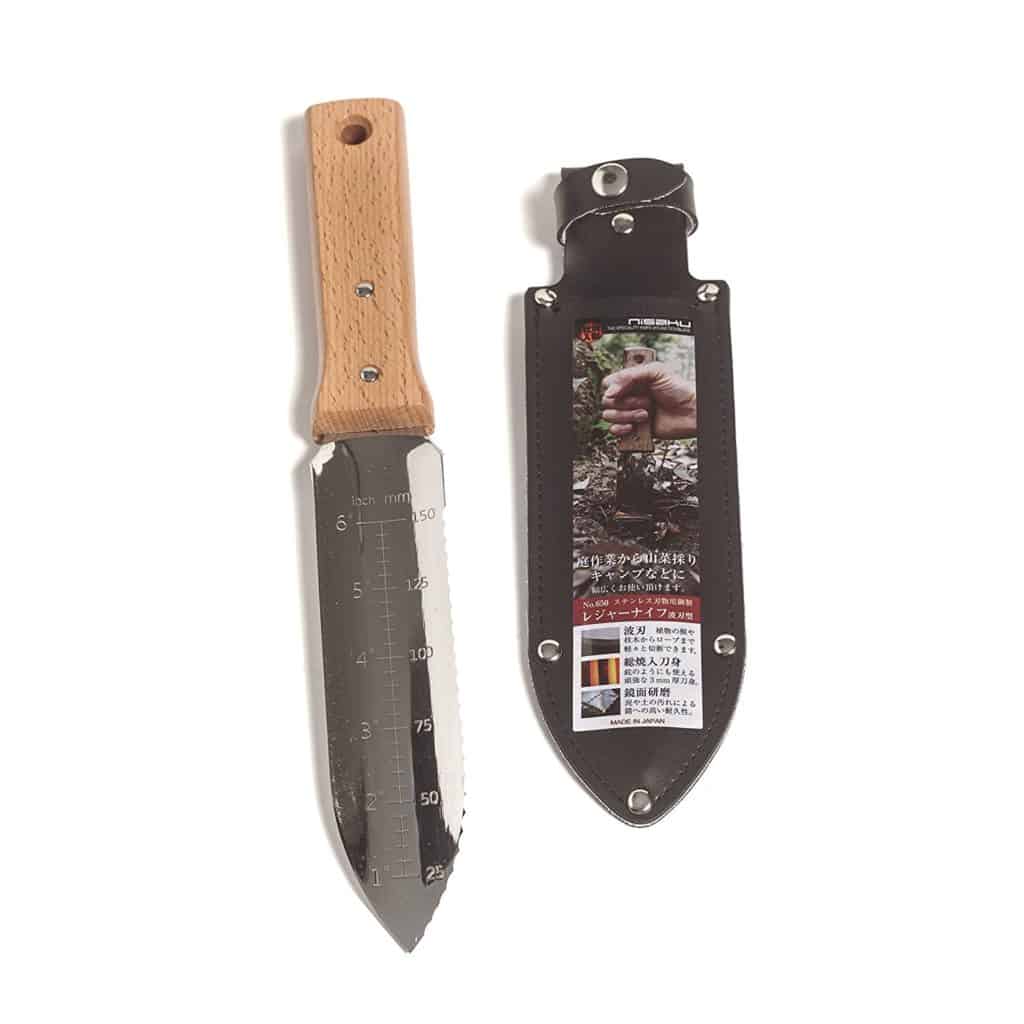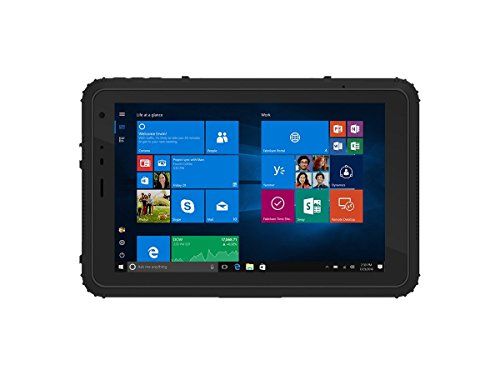Binoculars are used by birders, hunters, wildlife watchers, event sports fans, astrologists, and safari-goers. However, there are many different kinds of binos and no one-size-fits-all. That’s why it is important to know the best type or brand for your activity, and even more so if you are looking for the best binoculars under 1000.
Recently, I went on a couple of wildlife watching tours but couldn’t afford top-of-the-line binos. It took me weeks of research to narrow down the best options for a professional viewing experience without breaking the bank. However, the time spent was worth it! I ended up buying a great pair that will last me a life-time. With my new sub- $1,000 binos I was able to see everything clearly from a good distance, and I learned more about binoculars than I knew what to do with. Here are the results of my research.
Table of Contents
Best Binoculars Under 1000
Leica Trinovid HD with Adventure Strap
This pair of Leica Trinovid HD Binoculars is considered the high end sports car in the compact bino class. It weighs in at 1.65 pounds and the dimensions are 4.6 inches x 5.5 inches x 2.5 inches. That makes the Trinovid great for carrying while hiking longer distances.
To keep your hands comfortable over longer periods of time, the manufacturer crafted their lightweight product with an ergonomic design. It’s even watertight to a depth of 3 feet.
The magnification is 8x, and the objective lens is 42mm made with ED glass. The exit pupil comes in at 5.25mm, so it is best used in daylight when the light transmission is 90%. The field of view at 1,000 yards is 414 feet. Additionally, the eyepieces adjust for glasses wearers and are filled with nitrogen to keep the internal lenses clear of fog.
You can also purchase these high-clarity binoculars in 8×32 and 10×42 without going over your 1000 budget. All come with an Adventure Strap you can use as a carrying case, binocular belt, and carrying strap. These exceptional binoculars from Leica come with a lifetime warranty, 3-year passport warranty, and are the best all-around binoculars on our list, and are definitely one of the best binoculars under $1,000.
Upland Optics Venator
The Venator by Upland Optics is the most affordable binocular on our list. They are also the most powerful at 10x magnification and a 42mm objective lens. Furthermore, the whole product weighs a measly 1.5 pounds with the product dimensions of 5.5 inches x 5 inches x 2 inches. The glass is extra-low dispersion (ED), meaning you will get a clearer image each time.
The Upland Optics Venator is fog proof, waterproof, and features a durable body for any drops. The field of view is 374 feet at 1,000 yards, making it a fantastic choice for hunters. Not to mention these optics are made for hunters, by hunters! The eye relief is a whopping 15mm, making these binoculars great for low light.
Similar to the first pair we reviewed, these binos also come with a lifetime warranty. However, you also get some additional accessories: a soft carrying case, neck strap, lens cloth, and flip down lens protectors.
Nikon Monarch Hg
The Nikon Monarch Hg is different than the other binoculars on our list, because it was created to offer a wide field of view. In order to accomplish this, the objective lens is 30mm and the magnification is offered in either 8mm or 10mm. That makes the field of view 8.3 degrees for the 8×30 and 6.9 degrees for the 10×30!
The lenses are made of ED glass and have a scratch-resistant coating made by Armor Lens. These are also compact binoculars: they weigh less than 1 pound and the dimensions are 4.7 inches x 5 inches x 1.9 inches. The body is made from magnesium alloy and rubberized for durability.
These Nikon’s are also waterproof and fogproof up to 16,000 feet elevation. Not to mention all lenses have a scratch-resistant coating. For your convenience, the diopter locks in your perfect setting. We recommend these Monarch’s for birdwatching and wildlife viewing.
The Best Binoculars Buyer’s Guide
When looking at binoculars, the terminology can be confusing for beginners. Even intermediate users can forget the small details if they’ve had the same optics for a while. However, I quickly learned there are some key terms everyone needs to be acquainted with. This quick read will tell you how binoculars actually work.
Magnification
The first of two numbers used to identify binos is the magnification power. For example, an optic that’s 7×35 has a magnification of 7. That means whatever you are viewing will look 7 times closer. Any binocular with a magnification higher than 10 amplifies the movement of your hands and affects the image quality.
Some optics have zoom. This means there is more than one magnification per binocular. If a bino is identified like 10-20×50. This means the magnification is between 10x and 20x, with a 50mm objective lens. Just keep in mind the added zoom detracts from the image clarity and brightness.
Objective Lens Diameter
The second of the two numbers used to identify binoculars is the objective lens diameter. Using the first example of 7×35, the lens is 35mm. The larger the diameter of the lens, the more light can be gathered. The more light captured by your binos, the easier it is to see images in even low light.
Field of View
Field of view refers to how many feet wide you can see at 1,000 yards. The wider the field of view, the easier it is to spot moving subjects such as birds, whales, and other wildlife. Keep in mind the higher the magnification, the smaller the field of view. That means if you are watching an event from high seats, pick a lower magnification optic.
Exit Pupil
This refers to the amount of light that reaches your eye. To calculate the exit pupil, divide the objective lens diameter by the magnification. For example, binoculars sized 10X50 has a 5mm exit pupil.
The exit pupil on binoculars should be 8mm and above. Anything smaller than your pupil size will give you a black vignette around the image, and your pupil can widen as large as 7mm in darker light conditions. It would be similar to looking through the peephole in your front door. Not to mention the larger the exit size the brighter and more stable the image.
Relative Brightness
This is the measure of how bright you see the object of your desire. Higher relative brightness means a brighter image that’s perfect in lower-light conditions. To figure out this measurement, square the exit pupil size. That means an exit pupil size of 8mm has a relative brightness of 64.
However, not all exit pupils are created equal. The type of prism system, glass, and lens coating also affect this computation.
Prism System
The prism system is what corrects the image orientation so our eyes can make sense of it. They also increase the sharpness of the picture. There are two different systems used in the binoculars on the market today: Porro and Roof.
Porro Prism – This system is the least expensive, but tends not to be water, weather, or fog proof. They are also a bit chunkier due to the angles used to correct the picture orientation.
Roof Prism – This is the most expensive system, and comes in a more compact package. Instead of using angles that take up space, the image orientation correction happens in a straight line.
Type of Glass
There are three popular kinds of glass that are used to make binocular lenses. These are BAK4, BK7, and SK15. Any of these can be made with high-quality Extra-Low Dispersion (ED) glass. Although it makes the optic more expensive, the precision and image clarity is worth it when the bino comes in under 1000.
BAK4 – This is the highest quality glass. If you want a vivid, clear picture, look no further than the BAK4. It is high density and transmits a large amount of light for a sharp image.
BK7 – BK7 material is widely used in the more affordable binoculars. However, the light transmission isn’t as good as the BAK4. This results in a less intense image.
SK15 – This glass is a nice compromise between the BAK4 and the BK7. Unfortunately, it isn’t as widely available.
Lens Coating
The coating on lenses reduces the amount of reflection. The less reflection, the lighter, brighter, and clearer the image appears. The lowest quality is a single layer coating (C). Multi-coating (MC) is better and provides decent performance. However, the best lens coating is fully multi-coated (FMC). This means every surface of every lens is protected.
Eye Relief
Eye relief is something you will want, especially if you wear glasses. This specification allows you to hold your binoculars further from your face while preserving the image. Glasses wearers should look for relief of 11mm or larger. An additional feature most high end brands have is an eyecup that can twist or fold up or down to allow for a different eye relief when wearing sunglasses. This can be really helpful when using binoculars in the field all day for work.
Focus
To focus the binos, use the wheel at the top between the two eyepiece barrels. This ring adjusts both at the same time. There is also a wheel that adjusts one eyepiece independently of the other. It is called the diopter adjustment and is located on one of the barrels close to the eyepiece.
Climate Considerations
There are a few different weather resistance features you can find, even on a budget.
Fogproof – A fogged up inner lens is extremely annoying and can even cause permanent damage. The key to prevent fogging on the internal surface of the lens is to buy from a manufacturer that has replaced the air inside the two barrels with gas. Just remember, the external surfaces can still fog.
Waterproof – Waterproof binoculars have an O-ring that seals your optics from moisture, dust, and other debris. These can be fully submerged and still survive, making them perfect for sight-seeing on or near the water.
Weather Resistance – Water resistant binos are not completely waterproof. You definitely should not submerge them. However, they can survive a rainstorm.
This video gives a helpful visual representation of our buyer’s guide.
Binocular Sizes
The size of the binoculars is determined by the size of the objective lens. However, there are three different categories: full, mid, and compact.
Full-Size Binoculars
The specifications of 8X42 and 10×50 are full-size binoculars. These are best used for anyone serious about wildlife viewing. Anyone serious about viewing wildlife or birds would be wise to consider one of these optics. Additionally, those using their binos on boats will benefit from the stability. Unfortunately, they are also heavier and more awkward to carry long distances.
Mid-Size Binoculars
Common moderate optics are 7×35 and 10×32. If you plan on backpacking or hiking long distances, you might find these middle-of-the-road binos too heavy. Others have no problem lugging them to their station. Overall, mid-size binoculars are the best for hunting and sporting use.
Compact Binoculars
Compact binoculars typically come in the specifications 8×25 and 10×25. These are the smallest and lightest sizes, which makes them best for long distance hikes and overnight trips. However, the smaller objective lens works best in the daytime. For night use, it’s better to go up to the next category. If you plan to use your optics for long periods of time, look for ergonomics.
Binoculars Versus Spotting Scopes
If you think you might need more power than a binocular can offer, check out the Best Spotting Scopes Under 1000. There is also information about a Spotting Scope with Built in Rangefinder.
One Final Word on the
Best Binoculars Under 1000
All three binoculars on the list are of the highest quality and produce the best clarity among optics less than 1000. Whether you are interested in watching birds, viewing wildlife, taking in events, or hunting, there is a bino for every need.
If you found our article on budget binoculars helpful, please like and share to help us out! If you already own your dream pair, tell us what you use in the comments below!



